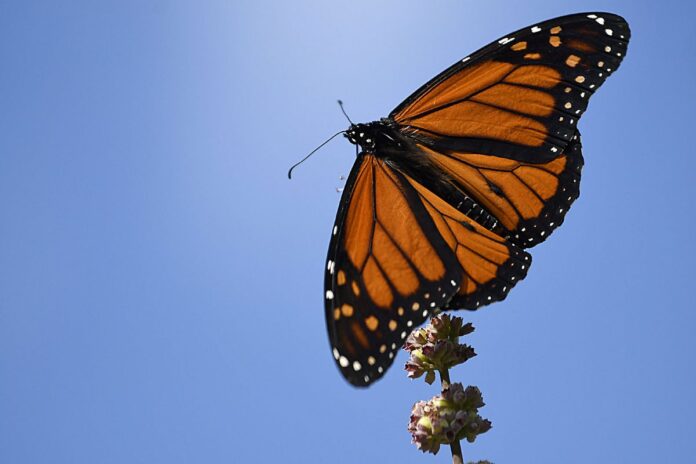LAGUNA VISTA — With the monarch butterfly population numbers expected to dwindle in the future, city leaders all over the state have agreed to pledge to save the beautiful winged creature.
Just recently, the town council authorized Mayor Susie Houston to take the National Wildlife Federation’s Mayor’s Monarch Pledge.
Experts say the monarch butterfly is becoming extinct.
Its population has declined by 90 percent in the last 20 years.
According to the Texas Parks and Wildlife Department, the monarch population has been on the decline because of extreme weather conditions in over-wintering and breeding grounds and the decline in milkweed and nectar-producing plant availability in the Midwestern monarch breeding grounds.
Through the National Wildlife Federation’s Mayor’s Monarch Pledge, cities throughout the country are coming together to create a habitat for these butterflies and to educate citizens about how they can make a difference at home, said City Manager Rolando Vela.
“The town is laying the groundwork to launch this awareness initiative to encourage our residents to plant a monarch garden,” Vela said.
Vela urges the community to contact the city if they want to be involved.
For the rest of this story and many other EXTRAS, go to our premium site, www.MyValleyStar.com.
Subscribe to it for only $6.99 per month or purchase a print subscription and receive the online version free, which includes an electronic version of the full newspaper and extra photo galleries, links and other information you can’t find anywhere else.
Butterflies, like birds and other animals, need food, water, and shelter, the basic necessities of life. In addition, butterflies like direct sunlight, and heat. They are cold-blooded creatures and need warm resting places such as flat stones, or bricks.
Butterflies use sunlight to regulate their body temperature. They need sunlight to keep themselves warm, but the outside temperature can also become too hot for them.
A good butterfly garden should provide both sunny places and shady places where butterflies can cool off while they eat. They also need shelter from wind, and inclement weather.
You see a beautiful orange butterfly and automatically think Monarch.
Wrong!
It could be a Monarch but it could also be a Queen or a Viceroy. All three are royalty in the butterfly world but very different when you come right down to it.
At first sight, many people confuse queens and viceroys with monarchs. There’s a special reason for this deception.
These three types of butterflies are known for practicing what experts call Müllarian mimicry. The species consume milkweed and sequester toxins from the plants in their bodies, making them both distasteful to predators. Both species utilize a warning coloration of bright orange and red tones that generally warn of toxic qualities to prey.
By doing this, they gain an advantage against predators.
Monarch
Monarch butterflies are bright orange with black and white markings. The body of the monarch is black. The wings are mostly orange with black veins running throughout. The outer edge of the wings has a thick black border. Within the black border are white spots.
The white spots can range in size and they decorate the wings. At the upper corner of the top set of wings are orange spots. The underside of the monarch butterflies’ wings can be seen when the butterfly is at rest or when it is feeding on a flower.
Viceroy
The viceroy butterfly is dark orange with black veins.
A row of white spots edge its wings.
Its color and pattern mimics the monarch butterfly’s pattern except for a black horizontal stripe that crosses the bottom of its back wings.
Queen
Queens are a darker, richer shade of orange, and their wing patterns are quite different. With their wings open, the two are easy to tell apart, since queen’s lack the black veining in their wings.
When their wings are closed, it’s easier to get confused, because both show black veining underneath. However, queens lack the black veins on their upper wings and have white spots on their lower wings. Monarch underwings are also a much paler shade of orange.
• There are two different functions that plants serve for butterflies. Nectar plants, and host plants on which butterflies can lay their eggs on.
• Overripe fruit, even fermenting fruit will also draw many butterflies. You can use a shallow pan filled with slices of melon, overripe bananas, peaches, or grapes.
• Rocks set among nectar plants provide a great place for butterflies to rest and warm up.
• Some favorite varieties of butterfly bush include adonis blue, purple emperor, pink delight, white profusion, nanho purple, black knight, frostweed, mistflower, golden rod, white honeysuckle and lantana.
• Monarchs lay eggs on milkweed, which is also a critical food plant for monarch larval or caterpillar stages, which feed almost exclusively on several different species of milkweed.




